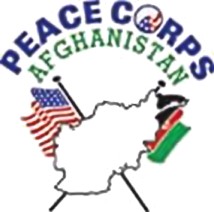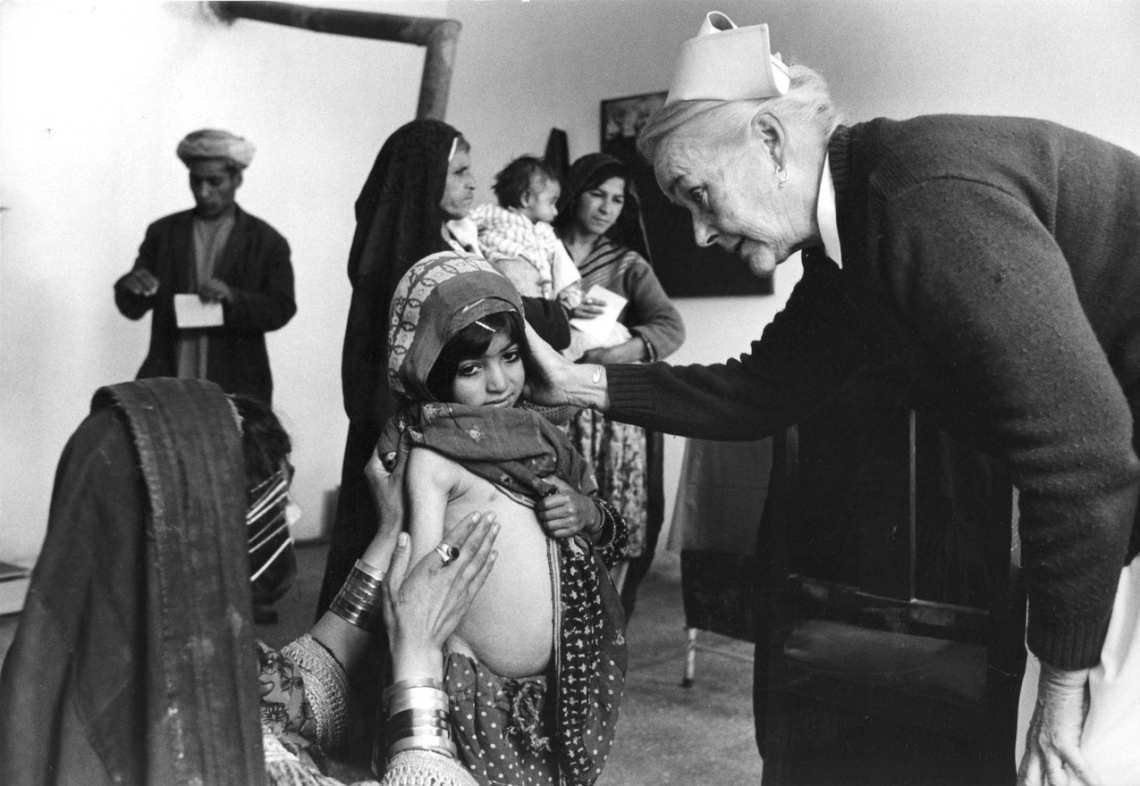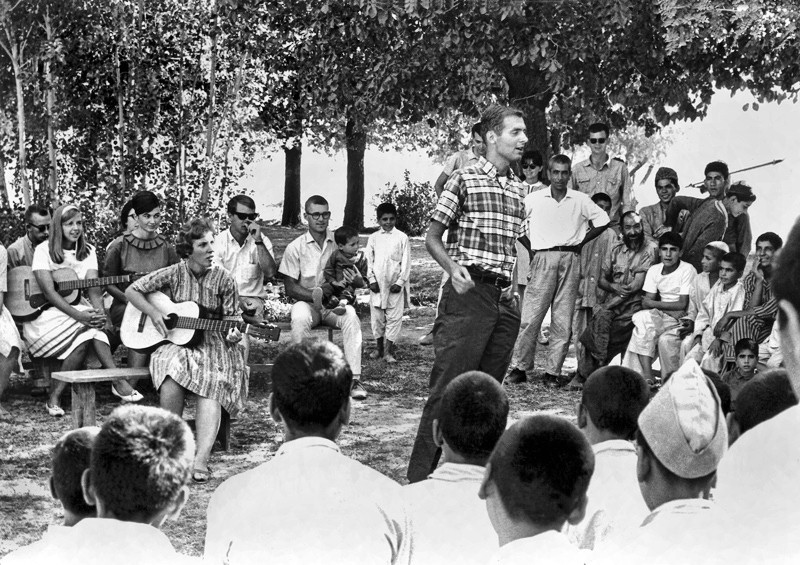Another Point of View of the Peace Corps in Afghanistan
by
 The information and discussion about the activities of and the accumulation of various forms of capital by some Peace Corps Volunteers (PCVs)—all in South America—is interesting (Anthropology News, December 2011, March 2012). President John Kennedy adapted the blast “ask not what this country can do for you, ask what you can do for this country” from his prep school headmaster’s command “ask not what this school can do for you, ask what you can do for this school”.
The information and discussion about the activities of and the accumulation of various forms of capital by some Peace Corps Volunteers (PCVs)—all in South America—is interesting (Anthropology News, December 2011, March 2012). President John Kennedy adapted the blast “ask not what this country can do for you, ask what you can do for this country” from his prep school headmaster’s command “ask not what this school can do for you, ask what you can do for this school”.
The predecessor of the American Peace Corps (PC) project was the “Community Development” (CD) model housed in several American universities funded by the government and designed to coordinate various “development” projects in foreign countries and to cloak the real intentions of the American “foreign aid” program which was intervention in and control of the civil and political societies of the “Underdeveloped World”. During the 1950s the University of Wyoming was engaged in such a project in Afghanistan. In early 1960s Michigan State University was deeply involved in community development projects in Cambodia, Laos, and South Vietnam. The MSU anthropology/sociology and political science departments and its School of Police Administration were leading participants in these programs. Wesley Fishel (political science) and John Donoghue (anthropology) were some of the MSU faculty I remember who were involved in course offerings and field projects connected to community development.
The Peace Corps was clearly an instrument of American post-WWII imperial stretch and Cold War strategy designed to undermine the presence and influence of the Soviet Union in “Third World” countries especially those constituting the “non-aligned” movement (led by Nasser, Nehru, Nkruma, Sukarno, and Tito) of which Afghanistan was a charter member. The American rage and hubris-driven imperial apparatus is a master of destruction, fragmentation, division, and separation. During the past sixty five years everything touched by this machinery (and its layers of real or imagined fear—“we are about to be hit”) has turned to dust—from the Middle East (except Israel) to Korea to Southeast Asia to Iran to Cuba to Afghanistan to Iraq to Somalia to Yemen to Middle and South America. Afghanistan, Iraq, and Palestine are the most devastated and bloodied victims of this imperial stupor. This frustrated and stupefied American imperial disposition was consolidated and its components fitted with various cloaks during the 1960s. Its Peace Corps component was masked with a smile and equipped with elementary competence in local culture and spoken language of the Other—pamphleteer history and culture and nutshell colloquial Kabuli Farsi in the case of Afghanistan—essentially what the Human Terrain System currently provides its participants headed to camping out in Afghanistan. It would be interesting to systematically study the history and political and ideological moorings of the PC programs and operations in countries like Afghanistan, Egypt, Ghana, India, Iran, and Pakistan.

A Peace Corps Nurse in Afghanistan in 1973
The anthropologist Louis Dupree, the famous authority on Afghanistan with known CIA connections (Senate 35[52]: S4649-S4950, 1989), has written a chapter about PC in Afghanistan in Robert Textor’s 1966 Cultural Frontiers of the Peace Corps. The first group of PCVs arrived in Afghanistan during late 1962. Over the next decade the program expanded and stabilized into a level of comfort resembling the ease of thousands of Euro-American hippies who had found themselves scattered throughout Afghanistan and crowded into Kabul on their way to the spiritual highlands of northern South Asia.

Peace Corps operations in Afghanistan were terminated after the Kabul government was overthrown by the Khalq revolution in 1978. This and the 1979 Islamic Revolution of Iran intensified the level of frustration and rage in the American imperial hubris. To my knowledge only one PCV converted the Afghan experience into an MA and PhD in anthropology. During summer 1965 I served as an assistant to the area studies component of the PC training program for Afghanistan at the University of Texas, Austin. I remember constant whisperings about the CIA involvement in this and previous Afghan PC programs and the connection of some of its staff to the US intelligence agencies.
One of the Peace Corps Volunteers who spent years in Afghanistan and who was deeply devoted to, inspired by, and worked closely with Dupree was Thomas Gouttierre, current director of the popular Afghanistan Studies Center (ASC) at the University of Nebraska-Omaha Gouttierre has testified numerous times during the last three decades before the US congress on behalf of continued American intervention in Afghanistan.

“Peace Corps volunteers host a ‘Hootenanny’ for Afghan orphans (Kabul, 1965)”. Craig Shulstad entertains children with songs, while Thomas E. Gouttierre (just behind Shulstad’s right shoulder, looking down at the ground) stands next to his wife Marylu (sunglasses, to the right of Shulstad’s left shoulder).
The ASC housed the Afghanistan Studies Association (ASA) during the early 1970s and I served as its president during 1973-74 totally unaware of its ideology and political connections and activities. In retrospect the ASA served as an academic cloak for ASC. Gouttierre was the self-appointed secretary of ASA throughout its life course. Other PCVs with experience in Afghanistan who have been associated with the ASC at UNO include Christian Jung, David Champaign (currently advisor to the US military). The close connection between the ASC and CIA and other US government military and civil operation has been recently publically aired at UNO. Currently ASC works closely with the US Army’s Human Terrain System programs in Afghanistan. (See anthropologist John Allison’s report on Zero Anthropology.) The textbooks currently used in the schools of Afghanistan are produced by ASC. The center has maintained extensive ties with US military and intelligence operations in Afghanistan for the past 35 years. The ASC staff have produced several studies about the mineral resources of Afghanistan (e. g. works by Christian Jung, and Jack Shroeder).
Several US educated Afghans who have worked with the PC training programs as language instructors have become prominent members of the American occupation program in Afghanistan—“Brown Skins with White Masks”. Mohammad Esmael Burhan, PhD University of Texas in linguistics, is currently a senior staff member at ASC. Ehsan Entezar, a favorite of PCVs for his legendary Kabuli attitude and humor, has written “Afghanistan 101”, a fixture in virtually all American government libraries. Hedayatullah Aminarsala, currently the chief Kabuli advisor to Hamid Karzai, taught Farsi in several PC training programs for Afghanistan during the 1960s. His wife, Betsey Thomas, was a PCV in Afghanistan during 1965-67.
The number of PCVs with service in Afghanistan and associated with the American military and political operations in the country is difficult to determine. But based on what I have been told and what an educated guess suggests, scores of PCVs with experience in Afghanistan have participated in the American occupation machinery of Afghanistan. The impact of the attempted Euro-Americanization of Afghanistan by PC is not easy to gauge. However, some of this effect speaks for itself in the rubble of the state format of Afghanistan caused largely by the dark minded rage of the American imperial warfare machinery—the ideological and material parent of the so called ‘Peace Corps.’
 Mohammed Jamil Hanifi from Sorkhab, Afghanistan is the author of several books and has contributed numerous anthropology articles. Hanifi received his Master’s degree from Michigan State University, and his Ph.D. from Southern Illinois University, Carbondale.
Mohammed Jamil Hanifi from Sorkhab, Afghanistan is the author of several books and has contributed numerous anthropology articles. Hanifi received his Master’s degree from Michigan State University, and his Ph.D. from Southern Illinois University, Carbondale.
Hanifi was a faculty member at Northern Illinois University and was under consideration for the chairmanship of the Department of Anthropology when allegations of plagiarism in his dissertation surfaced. He wound up resigning from the university. He is no longer affiliated with the Department of Anthropology at Michigan State University.
Sadly, this is what I’ve been saying for almost 6 decades since my tour of duty in Guayaquil, Ecuador. And here I am again with the “same old story.”
My job designation was Community Development. I worked and lived in an impoverished barrio in an urban setting. In my first days there I was introduced by the Peace Corps to Alberto Alarcon, a successful Ecuadorian business man. Every month I went to his office and was given a check in Sucres for what amounted to $100 for development of activities carried out through the community center that had been built by the former PC volunteers. Everything was fine until two events occurred.
The first, was a party in my apartment in the barrio, where I had invited people from the community and Sr. Alarcon. Early on the in the party he came over to me, and demanded to know what “that young man” was doing in my home. The young man was Angel Castro, a university student who had grown up and continued to live in the Barrio. I said “he is an active member of the Community Center and one of best organizers we have.” Alarcon said, “Get him out of here, he’s a communist.” I wouldn’t comply and Alarcon left in anger.
The second event was after the members of the community center and I organized a “visit,” to the Municipio, demanding that something be done about the foul smelling, raw sewage that was gushing down the hill on which our community was built, intermittently but regularly pouring over the steep stone staircase which was the only way up and down the hill, and which abutted our houses. A day later I was called into the Consul General’s office and told to basically cease organizing, and to not “enter into the politics of the country.” The next time I went to get the check from Alarcon, I was told by his secretary that there was and would be no more checks for the community center. And that Mr. Alarcon was on one of his regular trips to Miami.
Skip now to ten years later. I was working at the Listener Sponsored radio station when Phillip Agee came in for an interview about his book “Inside the CIA.” Later that day, I leafed through the book, curious if I could find anyone I knew, as Ecuador and Guayaquil figured fairly prominently. And sure enough, there was Alberto Alarcon, described as the in-country CIA operative, in charge of university activities. Excuse me if I don’t have the description exactly as written, as I don’t have the book in front of me. But it’s close enough to explain why he was distressed that Angel was in my apartment and active in the “Community Development” project I was assigned to pursue.
BTW, the sewage problem was never resolved in the time I was there. But no longer receiving the check in the end was a boon to Community Development, as the people of the community worked industriously and cooperatively to make the Centro Comunal Santa Ana self-sufficient.
Marnie Elberson Mueller (Ecuador 1963-65)
The radio station was the NYC Pacifica affiliate WBAI-FM. Marnie
Dear Mr. Hanifi:
The basis for your assertion that Peace Corps was an “instrument of American post WWII imperial stretch and Cold War strategy designed to underwrite the presence and influence of the Soviet Union in 3rd world countries” is tenuously documented herein.
Speaking for myself, I went through PC training at the Univ. of Wisconsin, served for 3 years as a rural cooperative development volunteer in Colombia, then 5 years on PC/W staff–and never once did I experience in word or deed that PC was “the community development model designed to cloak the real intentions of American foreign aid”.In fact, the initiating factor for Colombia being one of the first two PC countries was a direct request from its then-president Restrepo’s request to then-president JF Kennedy for Volunteers to help his country support its National Office of Community Development. That Office existed well before PC was established. Down through the past 60+ years of PC’s existence, one can certainly find instances of Volunteers being asked to provide information to other agencies of our government. For instance, some 10 years ago, the entire Volunteer contingent in Bolivia was withdrawn after PC had to admit that it had been providing information on its field activities to the U. S. Embassy in La Paz. Too, many charges were made that some Volunteers were actually CIA Agents–but none of them were ever proven to be so, with perhaps the exception of one case that I am unable to recall at the moment. Given the hundreds of countries that PC has had Volunteers in over the past six decades, Afghanistan can hardly be held up as an exemplar for your basic assertion. And the concept of Community Development itself was focused on PC projects in South America rather than globally.
Sincerely,
Jeremiah Norris
Fact: At no time was there a Peace Corps program in Egypt (see Mr. Hanifi’s third paragraph).
Fact: Peace Corps Volunteers continued to work in Afghanistan (after the Khalq regime coup in 1978) until September of 1979 when civil and political warfare between the two competing Khalq parties made further work impossible. It was then that the last of the Peace Corps Volunteers were brought home. Three months later the Soviet military entered Afghanistan, dismantled the Khalq regime, executed the Prime Minister Hafzirullah Amin and installed a Soviet backed puppet regime.
I was a Peace Corps Trainee at the University of Texas, Austin the summer of 1965. There was a Mr. Hanifi who presented to our Group background on Afghan culture. I remember how disappointed I was in his presentations. They were weak without much content. Sad to say.
My job in Afghanistan along with six other Peace Corps Volunteer accountants was to train and implement Afghan government bookkeepers in a new Country wide governmental accounting system. The system was designed by American advisors employed by Public Administration Service (PAS). We replaced three other PCVs whose term of service was completed. After six months the Afghan Ministry of Finance was able to publish for the first time a comprehensive financial report of the entire country. No, the CIA was not involved in this project. I consider this project “Nation Building” in the very best sense of the concept. Our Peace Corps director was Robert Steiner who stated that in his opinion this was the best Peace Corps project at that time. He became the Peace Corps Administrator for North Africa, Near East and South Asia.
My experience was that the Peace Corps was very sensitive to having any connection with the CIA. In fact all Peace Corps Volunteers in Afghanistan (between 200 and 250) at that time were strongly discouraged from associating with the US Embassy and its Staff House. We all lived and worked in many different Afghan communities and were sustained by Afghan commerce (food, shelter, etc.).
For most of my time in Afghanistan I lived and worked 24/7 with my Afghan counterparts. I learned to speak Dari and near the end of my service trained Afghan bookkeepers in Dari.
My Peace Corps experience has had a deep and lasting impact on me. Probably the most influential period of my life.
The Afghans I lived and worked with were eager, thoughtful, very intelligent, and incredibly hospitable. I love and cherish my memories of that time in my life.
Stephen Nadler
Returned Peace Corps Volunteer to Afghanistan
Group VI
1965-1967